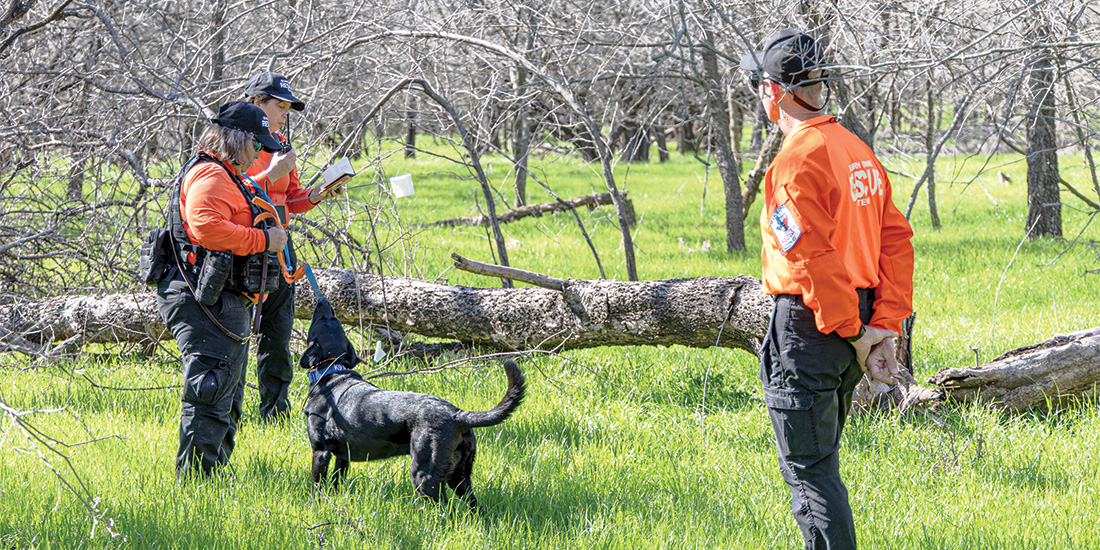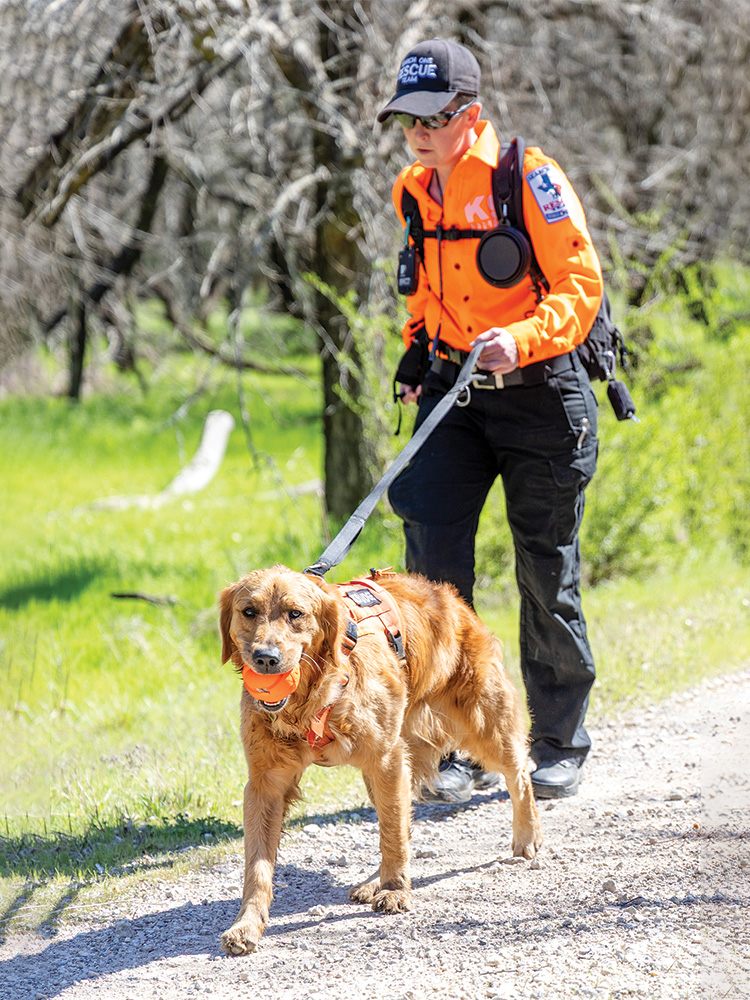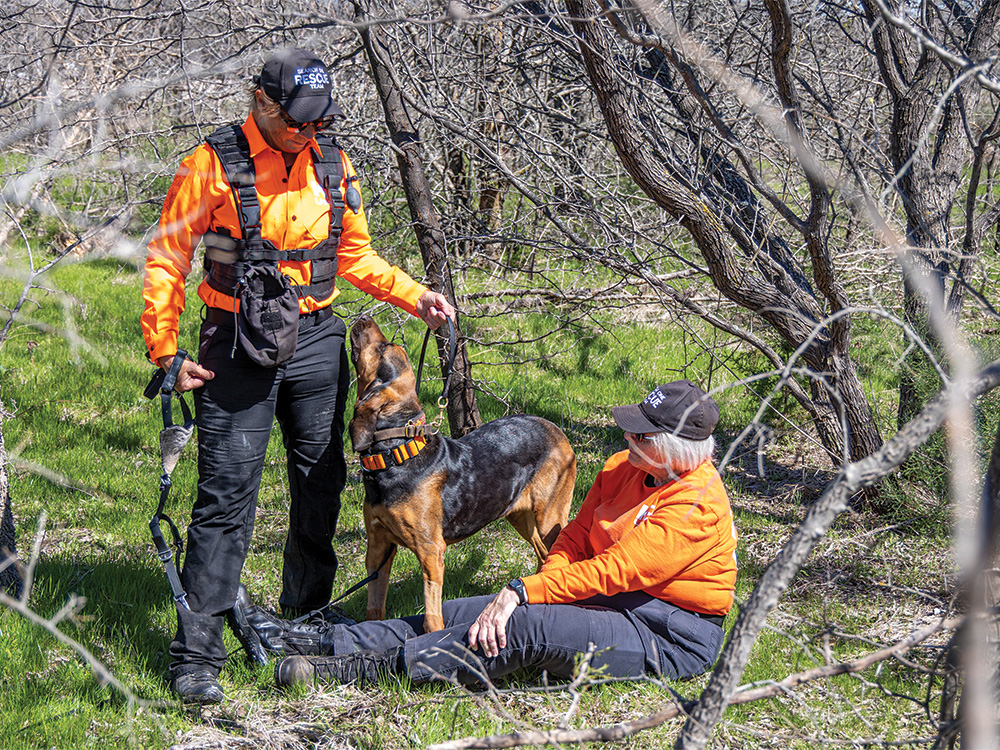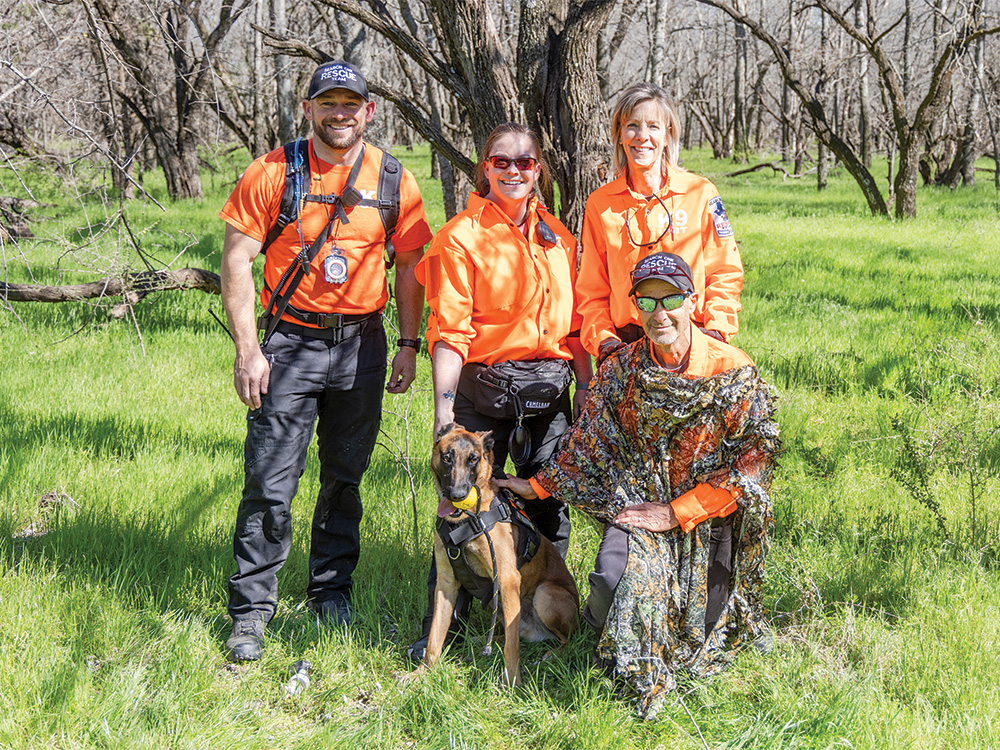Every Penny Counts: How CCF Grants Keep Search One Rescue on the Trail

Search One Rescue responds to more than 100 missing person calls a year throughout North Texas. The all-volunteer group relies on trained dogs and their handlers to reunite families
with their loved ones.
The nonprofit has been funded entirely by grants and donations since Paul Lake founded it in 1983.
That includes over $80,000 in CoServ Charitable Foundation grants over the last two decades. The most recent grant in 2023 helped purchase new radios and GPS collars.
“The CoServ Charitable Foundation has been really good to us over the years,” said Paul, who is the Executive Director.
CoServ Communications caught up with the team as they conducted training on open land in Grapevine.
Trailing Team starts the search
Handler Vicki Rose leads her bloodhound Lola on a leash through the fields and forests of the training area. They are on the Trailing Team, usually the first to arrive in a real-life scenario.
Vicki takes Lola to the spot where the “victim” was last spotted and presents a scent article, something the victim touched, to the dog. Lola leads Vicki
down the trail, through thick grass and scrub brush, until they find the “victim” sitting under a tree.
In a real scenario, the person could be missing for 12 hours or more before Search One Rescue arrives.
“Our goal is to find the direction of travel,” Vicki said. “We’d love to find the person, but that’s not always possible.”
Air Scent Team sweeps a wider area
Once they have a general direction, Search One Rescue’s mobile command center dispatches the Air Scent Teams. These dogs are specifically trained to identify the scent of everyone in their “pack.” They search for unfamiliar scents that could lead to the missing person.
Handler Jamie Daniels lets Hilo, a one-year-old Belgian Malinois, off the leash to search for the “victim.” Her job is to keep him on task as he tracks down the scent and locates the victim within about 10 minutes.
In a real search, Air Scent and Trailing teams work with drones and law enforcement officers.
Helping with crimes and cold cases
Some Search One Rescue dogs are also trained to locate human remains.
For this scenario, Search One Rescue dispatches Pax, a black labrador, and her handler Snookie Tinnerman.
Snookie notes which way the wind is blowing, and directs Pax to sweep the area, moving upwind. The remains are in jars hidden in the forest. Pax finds each one in five minutes or less, letting everyone know with an emphatic bark. These searches can bring closure to families and help with criminal investigations.
The public may have no idea of the work Search One Rescue’s work– until it’s their loved one who is missing. Volunteers train in the wilderness through the heat, rain, mosquitoes, and everything Mother Nature throws at them – all in preparation for a real search.
“If my dog makes one find in his whole career, it was worth it,” said Steve Deutsch, a Search One Rescue volunteer who has been with the organization for more than 25 years.



Grants distributed to Search One Rescue were from Operation Roundup and the General Fund. Your generosity makes these grants possible!
- Operation Roundup funds come from CoServ Members and Customers who round their bill up to the nearest dollar.
- The General Fund is funded through CoServ Employee payroll deductions and other fundraisers throughout the year.

